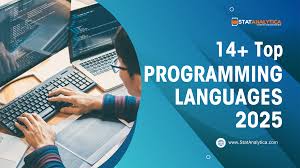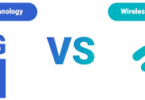Top 10 Programming Languages to Learn for Career Growth in 2025
In the fast-evolving world of technology, programming languages continue to shape the landscape of software development, artificial intelligence, data science, and beyond. As we approach 2025, the demand for skilled programmers will only increase, and choosing the right programming language to learn can have a significant impact on your career. Whether you’re a beginner looking to break into the tech industry or an experienced developer seeking to expand your skill set, knowing which languages will be in demand is crucial for staying competitive.
In this article, we’ll highlight the top 10 programming languages you should learn in 2025 for career growth. These languages span various fields, including web development, data science, artificial intelligence (AI), and mobile app development, giving you a diverse set of options to consider.
1. Python: The Versatile Powerhouse
Python has long been a favorite among developers, and it shows no signs of losing its popularity anytime soon. As one of the most versatile programming languages, Python is widely used in fields such as data science, artificial intelligence, machine learning, web development, and automation.
In 2025, Python will continue to be in high demand due to its simple syntax, vast libraries, and strong community support. Its applications in emerging fields like AI and data analytics are crucial, making it an essential language for career growth.
Why Learn Python in 2025:
- Widely used in AI and machine learning: Python is the go-to language for building AI models and data analytics solutions.
- Easy to learn and use: Python’s simple and readable syntax makes it an ideal choice for beginners.
- Extensive libraries and frameworks: Libraries like TensorFlow, NumPy, and Django empower developers to build powerful applications efficiently.
- In-demand across industries: From finance to healthcare, Python skills are highly sought after in various sectors.
2. JavaScript: The Backbone of Web Development
JavaScript remains the dominant language for front-end and full-stack web development. With the rise of web applications, interactive websites, and progressive web apps (PWAs), JavaScript will continue to be a fundamental skill for developers in 2025.
As more businesses rely on responsive, user-friendly websites and applications, JavaScript frameworks like React, Angular, and Vue.js will become increasingly valuable. Whether you’re building dynamic user interfaces or working with server-side technologies like Node.js, JavaScript is essential for web developers looking to stay competitive.
Why Learn JavaScript in 2025:
- Key language for web development: JavaScript powers the interactive elements of websites and web applications.
- Strong ecosystem: Libraries and frameworks such as React, Angular, and Vue.js make JavaScript even more powerful.
- Full-stack development: JavaScript is used both on the client-side (front-end) and server-side (back-end) through technologies like Node.js.
- High job demand: JavaScript developers are in demand across a wide range of industries, particularly in web and app development.
3. Go (Golang): The Language for Scalable Systems
Go, also known as Golang, was developed by Google and is gaining significant traction in fields like cloud computing, microservices, and backend development. Its simplicity, performance, and concurrency support make it ideal for building scalable, high-performance systems.
In 2025, Go will be increasingly popular for cloud-native applications, containerization (with tools like Docker and Kubernetes), and real-time applications that require efficient handling of concurrent processes.
Why Learn Go in 2025:
- High performance: Go’s compiled nature and efficient memory management allow developers to build fast, scalable systems.
- Cloud-native applications: Go is widely used in cloud computing and microservices architectures.
- Concurrency support: Go’s goroutines and channels make it excellent for concurrent programming, which is vital for real-time applications.
- Growing demand in tech companies: Many tech giants, including Google, Uber, and Dropbox, use Go for backend services.
4. Java: A Timeless Choice for Enterprise Solutions
Java remains one of the most widely-used and trusted programming languages, particularly in large-scale enterprise applications. In 2025, Java will continue to be essential for developing enterprise-level solutions, including banking systems, e-commerce platforms, and other mission-critical applications.
Despite the rise of newer languages, Java’s stability, scalability, and extensive ecosystem make it a go-to language for businesses that require reliable, long-term software solutions.
Why Learn Java in 2025:
- Enterprise-level applications: Java is ideal for building large, scalable enterprise systems and applications.
- Cross-platform development: Java’s “write once, run anywhere” philosophy allows applications to run on multiple platforms, from desktops to mobile devices.
- Strong community support: Java has a massive developer community and a wealth of libraries and frameworks (e.g., Spring, Hibernate).
- Demand in finance and enterprise sectors: Java developers are always in demand, especially in financial services, banking, and e-commerce.
5. C++: The Language of High-Performance Computing
C++ is known for its speed and efficiency, making it the language of choice for performance-critical applications. If you’re interested in fields like game development, system programming, or software that interacts closely with hardware, learning C++ is essential.
In 2025, C++ will remain highly relevant in industries that require high-performance computing, such as gaming, embedded systems, and simulations.
Why Learn C++ in 2025:
- High-performance applications: C++ is used for building software that requires maximum performance, such as games and real-time systems.
- System-level programming: C++ is perfect for low-level programming, such as operating systems and embedded systems.
- Extensive usage in gaming: Many AAA games and game engines are built using C++.
- Job opportunities in specialized fields: Developers with C++ expertise are in demand in fields like gaming, finance, and hardware development.
6. Swift: The Future of iOS Development
Swift, Apple’s programming language for iOS and macOS development, has become the standard for building apps for the Apple ecosystem. By 2025, the demand for Swift developers will continue to grow as mobile apps become even more integrated into everyday life.
If you’re interested in developing apps for iPhones, iPads, and MacBooks, learning Swift will be essential to your career as an iOS developer.
Why Learn Swift in 2025:
- Exclusive to Apple ecosystem: Swift is the primary language for building apps on iOS, macOS, watchOS, and tvOS.
- Easy to learn and use: Swift’s syntax is clean and modern, making it a great language for both beginners and experienced developers.
- Rapid growth in mobile apps: The iOS app market continues to grow, creating demand for skilled Swift developers.
- Support from Apple: Swift is backed by Apple, ensuring continuous development and improvement of the language.
7. Kotlin: The Modern Language for Android Development
Kotlin has quickly become the preferred language for Android app development, replacing Java for many developers. Kotlin is fully interoperable with Java, meaning it can be used alongside existing Java code in Android projects.
By 2025, Kotlin will be the go-to language for Android developers, as it is more concise, safer, and easier to work with compared to Java, making it a must-learn language for anyone interested in mobile app development.
Why Learn Kotlin in 2025:
- Preferred language for Android: Kotlin is now the official language for Android app development, replacing Java in many cases.
- Concise and expressive syntax: Kotlin’s syntax is more concise and expressive than Java, making code easier to write and maintain.
- Interoperability with Java: Kotlin is fully compatible with Java, allowing developers to transition smoothly from Java to Kotlin.
- Demand for Android developers: As the Android ecosystem grows, the need for Kotlin developers will continue to rise.
8. Rust: A Safe and Efficient Language for System Programming
Rust is a relatively new language that focuses on memory safety and performance. Rust’s unique features make it an excellent choice for system-level programming, such as operating systems, game engines, and embedded systems.
In 2025, Rust will continue to grow in popularity due to its ability to prevent common programming errors (like memory leaks and null pointer dereferencing) while maintaining high performance.
Why Learn Rust in 2025:
- Memory safety: Rust’s ownership model ensures memory safety without the need for garbage collection, preventing common bugs.
- Performance: Rust is as fast as C and C++ but with more safety features, making it ideal for performance-critical applications.
- Increasing adoption: Companies like Mozilla, Microsoft, and Dropbox have adopted Rust for building high-performance systems.
- Demand for system-level developers: Rust is gaining traction in industries like game development, system programming, and blockchain.
9. R: The Language for Data Science and Statistical Computing
R has long been a popular language for data analysis, statistics, and scientific computing. While Python has become the dominant language in data science, R still holds a special place in certain industries, particularly in academia, research, and statistical modeling.
If you’re looking to work in data science, machine learning, or bioinformatics, learning R in 2025 can give you an edge in your career.
Why Learn R in 2025:
- Data analysis and statistics: R is specifically designed for statistical computing and data visualization.
- Powerful data science libraries: Libraries like ggplot2, dplyr, and caret make R an excellent tool for data manipulation and analysis.
- Strong presence in research: R is widely used in research, especially in fields like biology, healthcare, and economics.
- Job opportunities in data science: R is in demand in fields where advanced statistical analysis is critical.
10. SQL: The Language of Databases
SQL (Structured Query Language) remains one of the most important languages to learn for managing and interacting with relational databases. Whether you’re working with MySQL, PostgreSQL, or Microsoft SQL Server, SQL will remain a fundamental skill for data analysts, backend developers, and database administrators.
As the world continues to generate massive amounts of data, the ability to query and manipulate databases will be in high demand, making SQL an indispensable skill in 2025.
Why Learn SQL in 2025:
- Data management: SQL is used to manage and manipulate data in relational databases, which are central to many applications.
- Ubiquitous use: SQL is the standard language for database management systems, making it applicable in virtually every industry.
- High demand across sectors: SQL is essential for data analysts, backend developers, and anyone working with databases.
- Foundational language: SQL is a foundational skill that is often required for more advanced data science and development roles.
Conclusion: Preparing for the Future of Programming
As we approach 2025, programming languages will continue to evolve, but the demand for skilled developers will only grow. By learning the top programming languages for career growth, including Python, JavaScript, Go, and Swift, you’ll position yourself for success in an ever-changing tech landscape. Whether you’re interested in web development, AI, mobile apps, or data science, mastering the right languages will give you a competitive edge and open up exciting career opportunities in the years ahead.










Leave a Comment